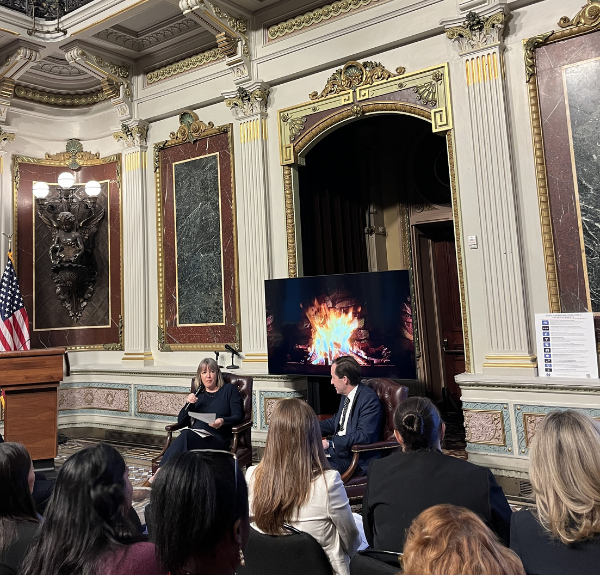The Biden-Harris President’s Management Agenda Vision (PMA) lays the foundation for an effective, equitable, and accountable government that delivers results for all Americans through three main priority areas. Periodically we share stories that highlight real world examples of one of the three PMA priorities. The below case study discusses an improvement to the federal hiring process, which supports the work of PMA Priority 1: Strengthening and Empowering the Federal Workforce.
Follow along as we share how the Department of the Interior (DOI) used change management best practices to implement a new hiring approach and became a leader in the Federal Government with the implementation of hiring best practices.
The Background
According to the General Services Administration’s hiring dashboard, until the summer of 2022 93% of open-to-the-public federal job announcements relied on self-assessment questionnaires and human resources resume review to determine eligibility for a position. For the past decade, the government has used a self-assessment model for hiring. However, only using self-assessments in hiring is not in line with hiring best practices and only 50% of federal job announcements have resulted in an actual candidate selection.
It was time to bring about hiring change in the Federal Government.
Transforming the Hiring Process
In May of 2022, the Biden-Harris Administration released implementation guidance for how to modernize and reform how federal job candidates are assessed and hired.
What this means for federal agencies is a shift in federal hiring practices. It’s a shift for both applicants and for hiring officials. Instead of a candidate simply self-reporting their skills on a list of job-related tasks like they have historically done, they must now demonstrate their abilities through validated assessments.
These assessments are often designed and validated by industrial/organizational psychologists, leverage the technical knowledge of subject matter experts (SMEs), and are administered by human resources professionals to measure how well applicants might perform in the position. Involving SMEs represents a significant change from past practice. SMEs can help examine resumes, review writing samples, conduct structured interviews, or create custom questions to assess applicants’ technical knowledge. With this new process, a candidate may complete multiple assessments prior to a hiring manager receiving the list of eligible candidates to interview and/or select.
This skills-based approach allows for more equity within the candidate pool by letting applicants demonstrate their skills instead of relying solely on degrees, education, and self-reporting of skills. The process allows candidates who may have been overlooked in the past to shine, widening the pool of potential talent.
The New Norm
Hiring is changing across the Federal Government. You may have encountered a skills assessment if you recently applied to a federal position. Federal agencies have been making the shift away from self-assessments in job announcements. Agencies are required to have 100% of job announcements include skills assessments as of January 1, 2023.
To learn firsthand how an agency is implementing these new practices, we spoke with Dr. Elizabeth Koman, Senior Personnel Psychologist and Landon Mock, director of strategic talent management from DOI. With an 18-month lead time and multiple shifts along the way, the human capital professionals across DOI set out to meet the directive.
Changing an Established System
How do you get human resource professionals within the Federal Government to shift to a new process, especially when they have used the previous method for over ten years?
Koman explained DOI’s change process: “We approached colleagues by explaining that we hear you and know that this is going to be difficult and we understand. But here is how we are going to tackle this change and here are the steps we are going to take and the resources we are going to provide you. We wanted to use a change management approach and not a hammerdown approach.”
“The feedback received over the years from hiring managers indicated that this would be a welcomed shift in the hiring process,” Mock said. “With self-rated questionnaires, candidates felt like they had to indicate they were an expert in everything to move forward in the hiring process, and people that responded honestly felt like they were being penalized for doing so.” DOI took a multi-pronged approach to drive adoption of this new hiring process. Methods included:
- Educating the workforce with webinars, training sessions, and industry demos
- Procurement of an automated, online assessment platform
- Updating existing agency policy
- Developing an Assessment Practices Guide detailing assessment basics and a range of potential assessment options that can be used in the hiring process
- Hosting regular meetings with an assessment working group with representation from throughout DOI’s bureaus
- Holding listening sessions and town halls
- Providing technical support for new software and demonstrations
- Conducting continual agency-wide evaluation of the efforts
Koman and Mock found that integrating these efforts into their change management process yielded a high level of success and smoother transition. DOI had over a 14,000% increase in the use of multiple assessments in hiring and there was no increase in their time to hire. They are one of the Federal Government’s leading agencies for implementation of these changes.
The Advice
In addition to the events DOI organized and the resources they provided, Koman and Mock mostly attribute their change management success to listening, acting as a team, and communicating openly.
Listening carefully to employee concerns informed aspects of DOI’s current guidance, such as the importance of bringing hiring managers up-to-speed on available assessment options. By listening, DOI was able to mitigate fears throughout the change process. Through teamwork, the DOI workforce combined their expertise to develop guides, resources, webinars, and find SMEs. Koman and Mock agreed that their success to date has been 50% the technical solution and 50% the change management piece.
While very proud of their move to skills-based hiring, there are things DOI would do differently in the future or recommend to other agencies as they integrate this new hiring process. Some of their suggestions include:
- Start small, rather than making large scale changes immediately
- Pilot test different components of the new process
- Communicate the value proposition to stakeholders early and often (e.g., how skills-based hiring helps to achieve numerous other hiring goals)
- Prioritize occupations or certain assessment tools
- Connect with external applicants about the changes, what to expect when applying, and how best to prepare themselves
There is always a learning curve when implementing change, but with the right tools and method it can be a smoother process.
The Outcome
Today DOI exceeds the required 50% skills-based hiring threshold.
“Anecdotally, we have heard stories about hiring managers receiving a certificate of eligible candidates within 48 hours of the vacancy announcement closing,” Mock said. “The combination of timely hiring and identification of highly talented candidates through a fair and objective process has us really excited about the future of hiring at DOI.”
The new process makes for a more efficient and equitable experience for both hiring managers and applicants.
By integrating skill-based hiring, the Federal Government is better able to get the right people into the right job — and do it more efficiently.




